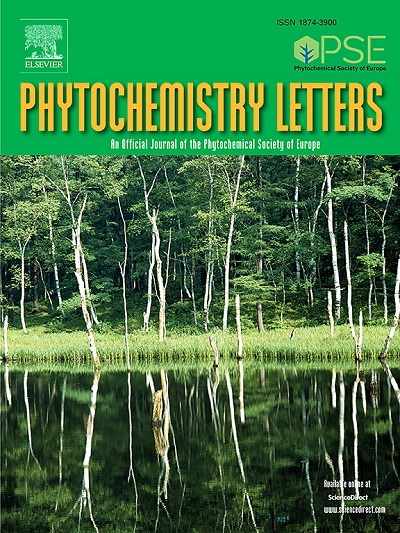Antioxidant capacity prediction: Combining individual compound capacities to predict plant-extract capacities
IF 1.4
4区 生物学
Q4 CHEMISTRY, MEDICINAL
引用次数: 0
Abstract
The antioxidant activity of plant extracts offer potential for preventing and managing degenerative diseases linked to oxidative stress. Whilst the structure-function relationship of individual compound antioxidant capacities is well-established, accurate prediction of the overall antioxidant capacity of complex mixtures such as plant extracts, remains challenging. In this study, we sourced a data set of 68 plant extracts with empirically determined antioxidant capacities via the 2,2-azino-bis(3-ethylbenzothiazoline-6-sulfonic acid) diammonium salt assay (ABTS assay) and paired quantitatively determined metabolite profiles. Using a previously developed Trolox equivalent antioxidant capacity (TEAC) model, we predicted the antioxidant capacities of each phytochemical within these profiles. We then employed polynomial regression with k-fold cross-validation (k = 10) to develop a model predicting the antioxidant capacity of the plant extracts. The model, which utilised the count and sum of individual compound capacities of antioxidant-capable phytochemicals to predict log10(TEAC), achieved an R2 of 92.28 % and a 10-fold cross-validated R2 of 74.49 %. When transformed back to TEAC (mM), the model resulted in an R2 of 94.59 %, with 77.9 % of predictions within 20 % of their true values. These results demonstrate the utility of statistical models in predicting individual phytochemical antioxidant capacities and their contributions to food functional properties. Our model represents a significant advancement in predicting plant-extract antioxidant capacities from their phytochemical compositions, with implications for optimising functional food value through targeted modulation of phytochemical profiles or strategic blending (fortification) of plant extracts.
抗氧化能力预测:结合单个化合物能力来预测植物提取物的能力
植物提取物的抗氧化活性为预防和管理与氧化应激有关的退行性疾病提供了潜力。虽然单个化合物抗氧化能力的结构-功能关系已经建立,但准确预测复杂混合物(如植物提取物)的整体抗氧化能力仍然具有挑战性。在这项研究中,我们获得了68种植物提取物的数据集,通过2,2-氮基-双(3-乙基苯并噻唑啉-6-磺酸)二铵盐测定(ABTS)和配对定量测定代谢物谱来测定抗氧化能力。使用先前开发的Trolox等效抗氧化能力(TEAC)模型,我们预测了这些剖面中每种植物化学物质的抗氧化能力。然后,我们采用k-fold交叉验证的多项式回归(k = 10)来建立预测植物提取物抗氧化能力的模型。该模型利用具有抗氧化能力的植物化学物质的单个化合物能力的计数和总和来预测log10(TEAC),其R2为92.28 %,10倍交叉验证的R2为74.49 %。当转换回TEAC (mM)时,该模型的R2为94.59 %,其中77.9% %的预测在其真实值的20% %以内。这些结果证明了统计模型在预测单个植物化学抗氧化能力及其对食品功能特性的贡献方面的实用性。我们的模型在从植物化学成分预测植物提取物抗氧化能力方面取得了重大进展,通过有针对性地调节植物化学特征或战略性地混合(强化)植物提取物来优化功能性食品价值。
本文章由计算机程序翻译,如有差异,请以英文原文为准。
求助全文
约1分钟内获得全文
求助全文
来源期刊

Phytochemistry Letters
生物-生化与分子生物学
CiteScore
3.00
自引率
11.80%
发文量
190
审稿时长
34 days
期刊介绍:
Phytochemistry Letters invites rapid communications on all aspects of natural product research including:
• Structural elucidation of natural products
• Analytical evaluation of herbal medicines
• Clinical efficacy, safety and pharmacovigilance of herbal medicines
• Natural product biosynthesis
• Natural product synthesis and chemical modification
• Natural product metabolism
• Chemical ecology
• Biotechnology
• Bioassay-guided isolation
• Pharmacognosy
• Pharmacology of natural products
• Metabolomics
• Ethnobotany and traditional usage
• Genetics of natural products
Manuscripts that detail the isolation of just one new compound are not substantial enough to be sent out of review and are out of scope. Furthermore, where pharmacology has been performed on one new compound to increase the amount of novel data, the pharmacology must be substantial and/or related to the medicinal use of the producing organism.
 求助内容:
求助内容: 应助结果提醒方式:
应助结果提醒方式:


